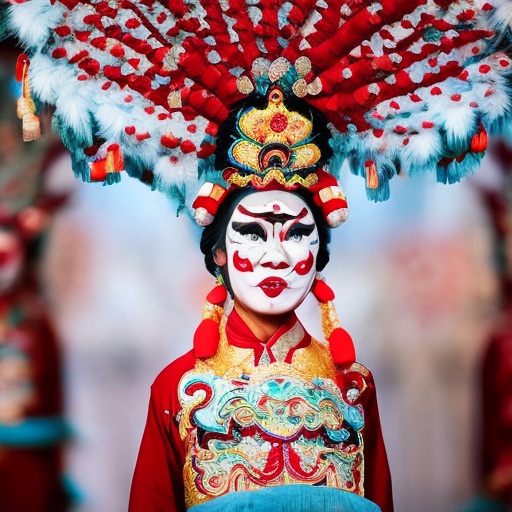Peking Opera: A Traditional Chinese Art Form
Peking Opera, also known as Beijing Opera, is a traditional Chinese art form that combines music, dance, acrobatics, and martial arts. It originated in the late 18th century and became popular during the Qing Dynasty. Peking Opera is characterized by its elaborate costumes, stylized movements, and distinctive vocal techniques.
History and Origins
Peking Opera has its roots in several regional performance styles, including Kunqu, a form of traditional Chinese opera that originated in the Jiangnan region. The art form was further developed in the late 18th century when four major opera troupes from Anhui Province were invited to perform in Beijing. These troupes brought their own unique styles and techniques, which eventually merged to form Peking Opera.
Characteristics and Elements
Peking Opera is known for its distinctive features, including its colorful costumes, elaborate makeup, and exaggerated movements. The performers use a combination of singing, speaking, and recitation to convey the emotions and actions of the characters. The vocal techniques in Peking Opera are highly stylized, with performers using a combination of falsetto, chest voice, and nasal tones to create different character types.
The costumes in Peking Opera are richly decorated and symbolize the characters’ social status, gender, and personality traits. The makeup, known as “jing,” is applied in a highly stylized manner, with different colors and patterns representing specific character types, such as heroes, villains, or gods.
Roles and Characters
Peking Opera has four main types of characters: Sheng (male roles), Dan (female roles), Jing (painted face roles), and Chou (clown roles). Each character type has its own distinctive style of movement, vocalization, and costume. The Sheng roles are further divided into different subtypes, such as the Lao Sheng (old male) and Xiao Sheng (young male).
The Dan roles are traditionally performed by male actors who specialize in playing female characters. They undergo extensive training to perfect the feminine movements and gestures required for their roles. The Jing roles are known for their elaborate makeup and bold, exaggerated movements. The Chou roles provide comic relief and often interact with the audience.
Themes and Stories
Peking Opera draws inspiration from a wide range of sources, including historical events, legends, and literary works. The stories often revolve around themes of loyalty, justice, and love. Some of the most famous Peking Opera plays include “The Legend of the White Snake,” “The Monkey King,” and “Farewell My Concubine.”
Influence and Preservation
Peking Opera has had a significant influence on Chinese culture and has been recognized as a UNESCO Intangible Cultural Heritage. It has also influenced other art forms, such as Chinese cinema and martial arts films. However, in recent years, the popularity of Peking Opera has declined, as younger generations show less interest in traditional art forms. Efforts are being made to preserve and promote Peking Opera through education, performances, and cultural exchanges.
Conclusion
Peking Opera is a traditional Chinese art form that combines music, dance, acrobatics, and martial arts. It has a rich history and distinctive characteristics, including elaborate costumes, stylized movements, and unique vocal techniques. Peking Opera plays an important role in Chinese culture and continues to be celebrated and preserved as an important part of the country’s artistic heritage.












